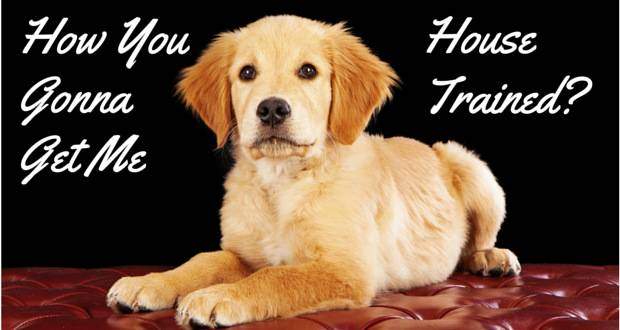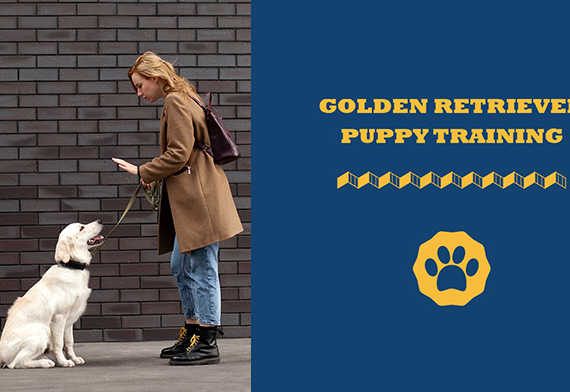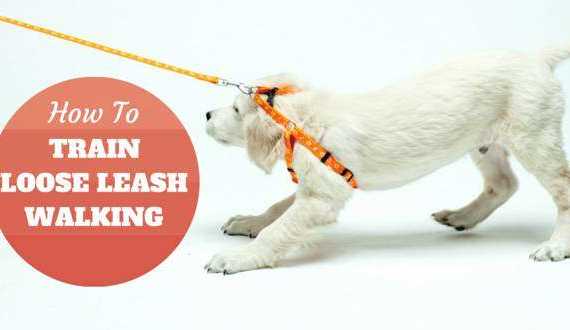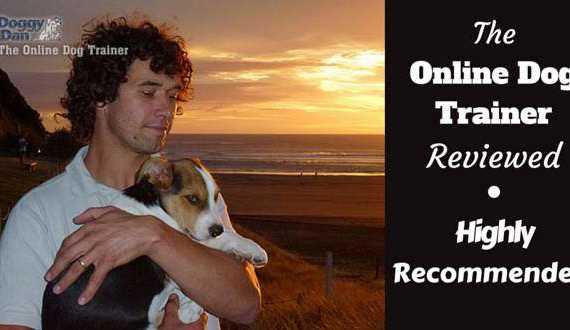Updated: August 9th, 2022

© Depositphotos.com / adogslifephoto
Isn’t it thrilling when you bring home your new bundle of joy? There is nothing cuter than a puppy… until it makes that first hot, steamy mess on your new Persian rug.
Potty-training frustrations have formed more than a few wedges between new pet parents and their fur babies. Fortunately, with a bit of knowledge, consistency and patience, spending time on your knees scrubbing up pet stains can be a thing of the past!
Training Methods to the Madness
There are four popular house-training methods utilized by owners:
- Crate training
- Paper training
- Constant-supervision
- Umbilical-cord training.
Some people stick to one method, while others use a combination of these different approaches to best suit their lifestyle.
Crate Training
Crate training works on two genetic principles: the safety of a den and the need to keep it clean. Our puppy’s ancestors – wolves – have their young in dens to provide shelter and safety. Wolves also keep dens clean so that predators don’t smell the defenseless pups. When the pups are old enough, they learn to eliminate outside of their den.
Your puppy has these same genetic rules in his brain: the den is a safe place and it needs to be kept clean. Crates utilize these instinctual rules. After all, with these genetic codes already hardwired into your dog’s brain, why not use it to your advantage?
Crate training uses a crate to not allow your puppy to eliminate where he shouldn’t by utilizing the concept that puppies won’t mess where they sleep. Therefore, if you put your puppy in the crate, he learns to hold his bladder until you take him to the appropriate spot.
The crate is a tool to utilize any time you cannot actively watch your puppy. When your puppy is out, you MUST supervise him at all times. Any time he has an accident in the house, this sets your training back.
Some people feel that crate training is cruel. Crates are simply tools. It’s the actions, not the tool, that are wrong. Here is a good discussion article on this topic: https://www.totallygoldens.com/is-crate-training-cruel/
Pros of Crate Training
- Crate training utilizes your puppy’s wild genetics to not eliminate where he sleeps. Using this ingrained instinct to your favor, you don’t have to reinvent the wheel.
- Crate training gives you a break. You don’t have to watch your puppy when he is in the crate. So go take that bubble bath without fear of an accident!
- The crate has the added benefit of keeping your puppy from other trouble when you’re unable to watch them, such as eating your houseplants.
- Crate training means no indoor messes to clean up, and no indoor potty smells to trigger repeat performances after being attracted by the scent.
Cons of Crate Training
- The main reason crate training wouldn’t be beneficial is if your puppy has a background of abuse where the crate was used to confine them for long periods of time. When puppies get used to sleeping in their own filth, they lose this natural instinct to keep their crates clean.
- Crate training shouldn’t be used if your dog is ill or has a medical condition that makes it impossible for them to wait to eliminate. Your dog shouldn’t have to sleep on soiled bedding!
- If crate training is only used to confine your puppy for long periods of time, he may associate it with negative things – such as isolation. Make sure you use the crate in positive ways so your pup associates comfort and good things, such as food, with the crate – not just being left alone.
Who Should Use Crate Training?
Crate training is best for you if you need some time where you don’t supervise your puppy, but also are available to let him out often.
If you work for long hours outside of the home, you will have to either have someone else let your puppy out during the day, or utilize the paper-training method so your puppy isn’t expected to wait a long time between breaks.
Paper Training
Paper training teaches a puppy to go to the bathroom on paper or puppy pads. This allows you to control where your puppy piddles.
Begin by putting the puppy in a confined area of the house with tile flooring for easy clean up. You can also utilize puppy playpens if you don’t have a suitable room.
Puppies like to eliminate on soft places, so putting paper down gives them this solution. Put paper or puppy pads on all hard surfaces. Your puppy will avoid eliminating on his bed and will use the paper, since it covers all other surfaces.
Once he gets the idea, you can slowly begin eliminating the paper, starting with material closest to the bed. Leave a small piece of slightly soiled paper where you want your puppy to continue to eliminate. This utilizes the principle that puppies like to eliminate where they smell their previous offerings.
The goal is for your puppy to learn to go only on the paper. If you want to eventually have your puppy eliminate outside, you can then slowly move the paper towards the door, and then put some paper outside.
When your puppy goes to the paper inside, you can open the door and let them go on the paper outside. You then slowly take away the inside paper until they are going to the door to use only the outside paper.
Pros of Paper Training
- It’s one of the easiest potty-training methods to teach.
- Paper training allows your puppy to have a place to potty at all times, which is helpful if you can’t get home to let them out.
- If you live in a high-rise apartment, or where it’s cold, snowy, or raining, your dog has an indoor potty option.
Cons of Paper Training
- If your goal is to get your puppy to eliminate outside, paper training can lengthen house training because your dog is taught to go inside the house first and you then have to basically re-train them.
- You also have a lot of stinky messes to clean up.
- Your puppy will always associate paper with potty, so you can’t leave your newspaper on the floor next to the couch or you may find some unwanted new headlines.
Who Should Use Paper Training?
Paper training may be best for you if you aren’t able to let your puppy out during the workday. Paper training gives your puppy room to play, while still allowing him to eliminate without the need for owner intervention.
Also, if you live in a condo and can’t take your puppy outside easily, or are training during inclement weather, training him on paper may be your best option.
Constant-Supervision Training
Constant-supervision training means that you never take your eyes off your puppy. You learn how to identify when you puppy needs to go, and at the first signal of circling or sniffing you scoop up your fur kid and take him to his potty spot in the yard.
This training method requires a lot of intense observation and is best suited for only the most vigilant of owners. If your pup sneaks off and makes a mistake in the house, it can set your training back weeks as it reinforces in your pup’s mind that going inside the house is a great idea.
Pros of Constant-Supervision Training
- Your pup has a lot more freedom, and you are there for his every action.
- You don’t have to buy any house-training tools.
- It’s nice if you don’t want to crate your puppy, or if you have a pup that fears enclosed spaces, or if your pup eliminates in his crate.
Cons of Constant-Supervision Training
- It’s exhausting to watch a puppy all the time. When you turn your back for a second – and you will – your puppy will sneak off and make a mistake in the house.
- This method can take longer than crate training. Every time you miss your puppy’s signals to use the bathroom and he goes in the house, this sets back the training.
- You must have the time to completely devote to your puppy during the housebreaking period, or you will be cleaning up a lot of messes on your carpet.
Who Should Use Constant-Supervision Training?
Constant-supervision training may be best if you have plenty of time to devote solely to the new addition. You must also be constantly home during the potty-training period.
It also helps to have a hyper-vigilant personality, and to be able to read a dog’s signals and set a constant schedule to anticipate the pup’s need to go potty before they do.
Umbilical-Cord Training

© Depositphotos.com / rusugrig
This training is a variation on constant-supervision training.
You still watch your puppy during his every waking moment, but you use a six-foot leash to keep him tethered to you.
You then watch for the signals that your puppy needs to go and take him outside.
The leash gives the added security that your pup can’t sneak off to use the bathroom unseen.
Pros of Umbilical-Cord Training
- You only need a leash to start the training, and you can also train your puppy to walk on the leash at the same time.
- Your puppy gets the exposure and socialization that comes with going everywhere with you.
- Because you guide your puppy’s every move, you can quickly establish yourself as the pack leader and form a strong bond.
Cons of Umbilical-Cord Training
- You must have your puppy tied to you at all times, which can be difficult.
- You also run the risk of leaving the leash on your puppy when you aren’t in the room. This can be dangerous if they get caught up in something.
- You have to be able to take your puppy everywhere with you, as he can’t be alone in the house for fear that he will make a mistake.
Who Should Use Umbilical-Cord Training?
If you like constant-supervision training, but want the added security of not losing track of your pup, umbilical-cord training may be a better option. Again, you must be able to keep your puppy with you wherever you go during the day.
You must also be physically able to restrain the puppy on the leash if he pulls after spotting your neighbor’s cat.
General Tips For All Training Methods
No matter what training method you utilize, it’s helpful to remember a few universal rules.
- Your puppy is not eliminating in the house to be spiteful. Do NOT personalize this process.
- Keep in mind your puppy’s age. At 8 weeks, most puppies cannot last past two hours. At 12 weeks, this time extends to three hours. At 16 weeks, puppies can wait up to four hours between potty breaks.
- Punishing a puppy when you find the mess is not helpful and damages your relationship. If you find a mess, simply clean it up. Don’t follow antiquated methods such as rubbing your dog’s nose in it.
- Puppies operate on schedules. When you adapt to the same schedule, you can anticipate their needs and set them up for success.
- Puppies potty after a long nap, after a meal and after a good play session. They will also need to go out first thing in the morning and right before bed.
- Your puppy will give you signals when they need to go, such as moving away from you, circling, sniffing or squatting.
- Puppies tend to go back to the same place they have soiled before. This works great when it’s in the correct area of your yard, but not so great when they return to that Persian rug. If you do have an accident in the house, you must eliminate all traces of the odor to avoid a repeat offender.
- Reward your puppy for going to the bathroom where you want. If you catch them in the act of making a mess in the wrong place, distract them, and then pick them up to take them to the proper location to finish.
- Say the word “Potty” when your pup first starts to go to the bathroom outside. With consistency, they begin to make the word association. When older, you can tell them to “Go potty!” This trains your dog to go when and where you tell them.
Conclusion
While no potty training journey is ever perfect, with the correct amount of patience, consistency and praise, most puppies learn quickly what’s expected of them.
The best way to house train a puppy for you may be sticking to one plan, or utilizing multiple approaches to achieve a perfectly house-trained pet.
With a little guidance and a lot of love, you and your puppy will find the right balance of a well-behaved dog and an unsoiled Persian rug!
A Complete Guide To House Training From Totally Goldens
For more information on house training, please see our articles linked to below.
This series contains everything a Golden owner needs to know on the subject and should have your puppy or dog toilet trained in the fastest, most effective and painless way for all involved.
We strongly recommend reading through the whole series before you begin, to give yourself the skills and knowledge for the greatest chance at speedy success.



